Physical Address
304 North Cardinal St.
Dorchester Center, MA 02124
Physical Address
304 North Cardinal St.
Dorchester Center, MA 02124
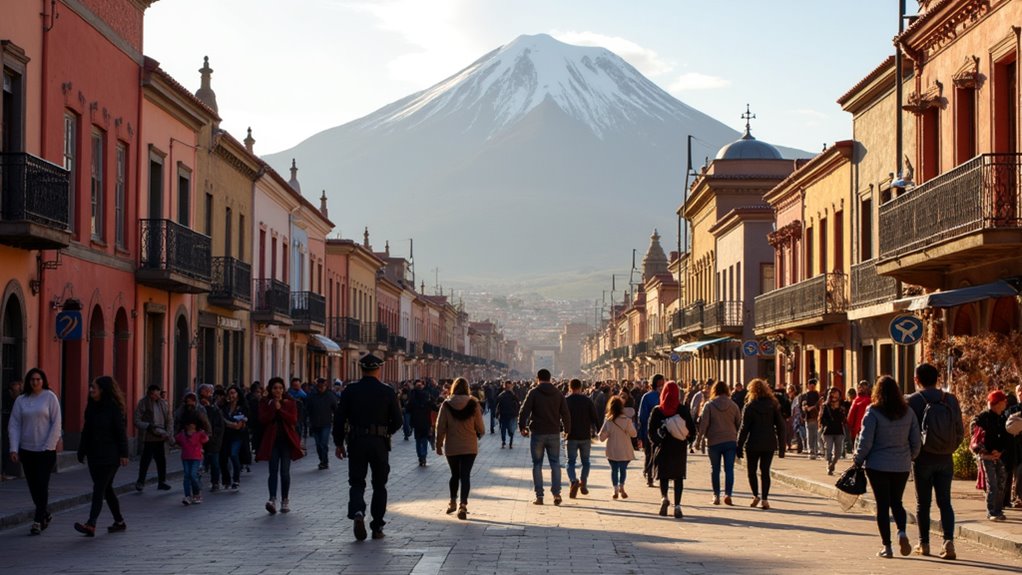
Precarious roads and pickpockets pose risks in Bolivia, but is this stunning South American country truly dangerous for travelers?
Bolivia offers varied safety conditions depending on your location. Crime rates are improving but remain high, with petty theft common in tourist areas. Stick to safer cities like Sucre or Santa Cruz, use registered taxis, and stay alert during political demonstrations. Never drink tap water, carry a medical kit, and be cautious on mountain roads—especially the notorious Death Road. With proper precautions and local awareness, you can navigate Bolivia’s remarkable landscapes while minimizing risks.
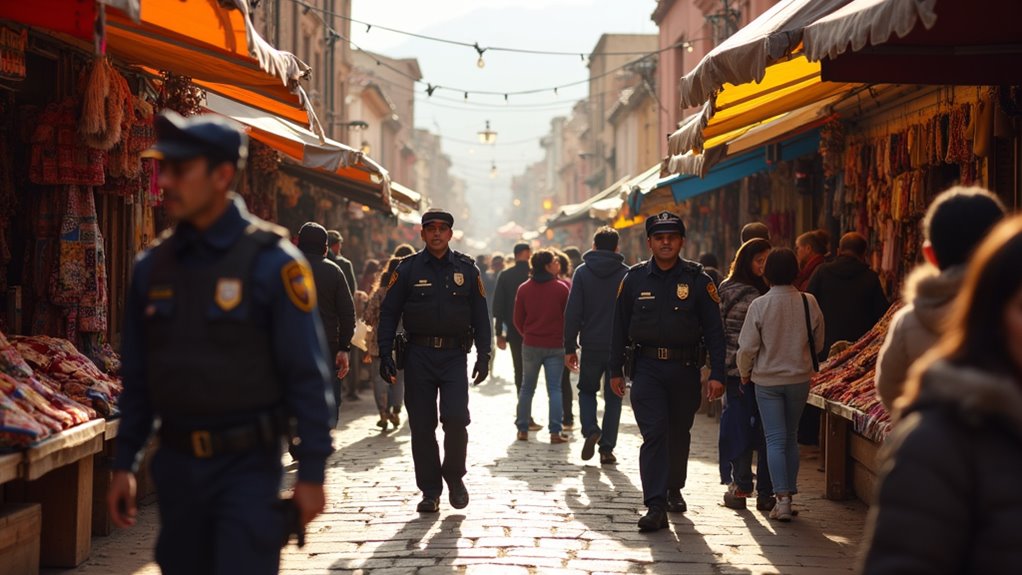
While Bolivia has seen improving safety trends in recent years, it’s important to understand the full picture before your visit. The country’s overall crime rate has decreased from 4.22 per 100,000 in 2019 to 3.49 in 2021, showing a positive trajectory. The data shows a consistent decline in crime rates from 2018 to 2020, followed by stabilization in 2021.
Homicide rates have also fallen markedly, dropping from 12.1 per 100,000 in 2012 to 6.3 more recently. However, Bolivia still ranks relatively high on the global crime index with a score around 65.0 in 2025.
Your experience will vary greatly depending on where you travel within the country. While the statistics show improvement, you should remain vigilant throughout your visit, especially regarding petty crimes which may not be reflected in these broader statistics.
Despite Bolivia’s varied safety profile, several cities and regions stand out as particularly secure destinations for travelers. Sucre ranks among South America’s safest cities, offering colonial charm with minimal violent crime and well-patrolled tourist areas.
Sucre shines as Bolivia’s safest gem, where colonial beauty meets peace of mind for visitors.
Santa Cruz provides relative safety in its tourist neighborhoods, though you’ll need to watch for pickpockets in crowded markets.
For nature enthusiasts, Villa Tunari delivers eco-tourism opportunities with small-town security and well-monitored national parks.
The Lake Titicaca region beyond Copacabana features tranquil communities with low crime rates, but stick to daytime travel.
Southern Bolivia’s Tarija and the Altiplano highlands offer wine tourism and cultural experiences with minimal reported incidents.
These safer destinations typically benefit from developed tourist infrastructure, visible police presence, and often the natural security of close-knit, less densely populated communities. However, travelers should practice common sense and stay aware of surroundings, especially in tourist hotspots where petty theft can still occur.
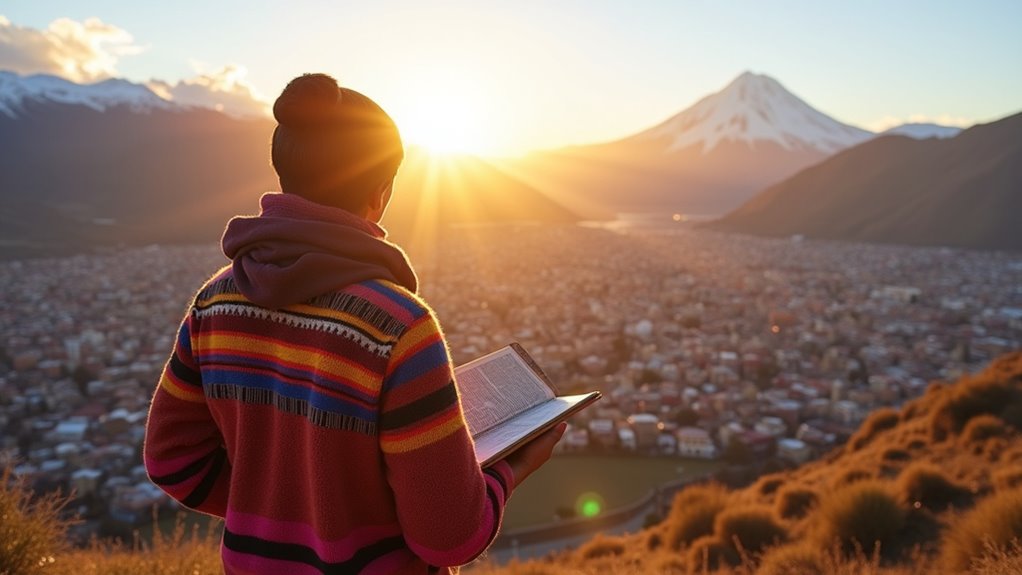
Bolivia’s most popular tourist destinations require special attention to safety concerns. In La Paz, watch for pickpockets in crowded markets and be wary of fake police officers requesting to see your documents.
Uyuni’s remote salt flats offer fewer urban crime risks but present environmental challenges. The high elevation of these areas can cause altitude sickness symptoms including severe nausea, headaches, and breathing difficulties even after initial acclimatization.
When visiting these hotspots:
Finding your way through transportation in Bolivia requires careful planning to guarantee your safety throughout your journey. Intercity buses remain the primary mode of travel, but they come with significant risks—drunk driving, poor maintenance, and speeding on narrow mountain roads contribute to Bolivia’s high accident rate of 1,400 annual road fatalities. This situation is highlighted in the Global Status Report on Road Safety 2023, which monitors Bolivia’s progress in reducing traffic deaths.
When steering cities, always opt for radio taxis rather than hailing unlicensed cabs from the street. While violent incidents are rare, theft on public transportation is common. Be particularly cautious on major highways connecting cities like La Paz and Oruro, which have seen numerous crashes.
The inconsistent enforcement of traffic laws and variable emergency response times compound these risks. Consider weather conditions when planning travel, as they can make already dangerous roads even more treacherous.
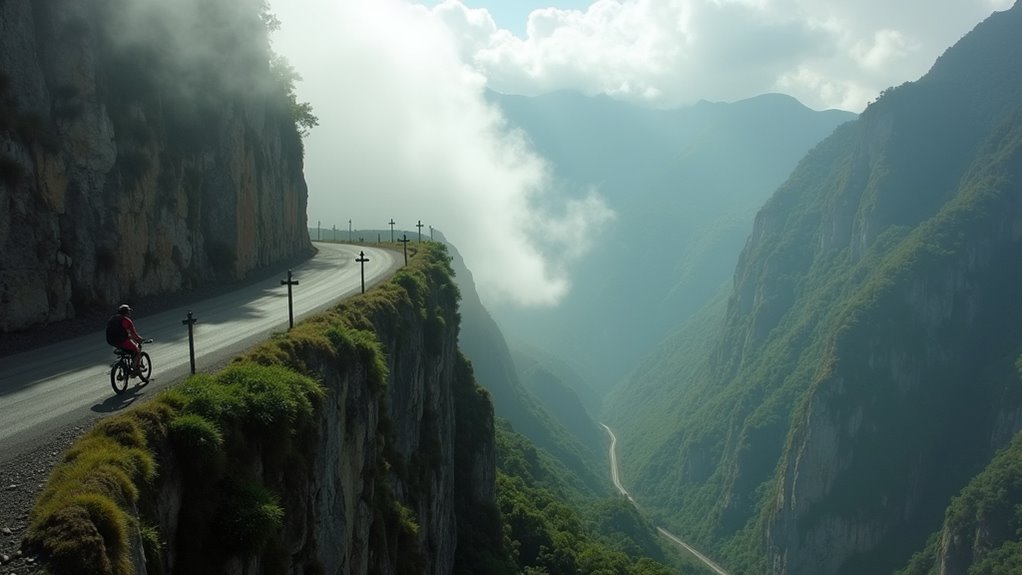
The infamous Yungas Road, aptly nicknamed “Death Road,” deserves its reputation as one of the world’s most dangerous highways. This narrow path—barely 3.2 meters wide in places—plummets from 15,750 feet to under 5,000 feet through treacherous terrain with minimal safety barriers.
Bolivia’s Death Road commands respect—a frighteningly narrow ledge where one misstep separates survival from the abyss.
If you’re considering visiting this notorious attraction, follow these critical precautions:
While a safer alternative route now exists, Death Road remains a popular but potentially lethal tourist attraction that claims numerous lives annually. Today, approximately 25,000 thrill-seekers visit the road each year, mostly for guided bicycle tours that emphasize safety protocols.
Before traveling to Bolivia, you’ll need to address several critical health considerations to make certain of a safe journey.
Yellow fever vaccination is mandatory if you’re over 1 year old and arriving from risk countries, with boosters recommended every 10 years.
You’ll also want protection against malaria if visiting areas below 2,300 meters elevation. Bolivia is classified as a high risk for Zika virus transmission, which is mainly spread through daytime mosquito bites in urban areas.
Pack an extensive travel health kit with medications, first aid supplies, and insect repellents, as access to healthcare is limited in rural areas.
Ensure you’ve secured travel insurance that covers medical emergencies abroad.
After returning home, complete any prescribed antimalarial medications and seek immediate medical attention if you develop a fever within a year, remembering to inform healthcare providers about your Bolivian travels.
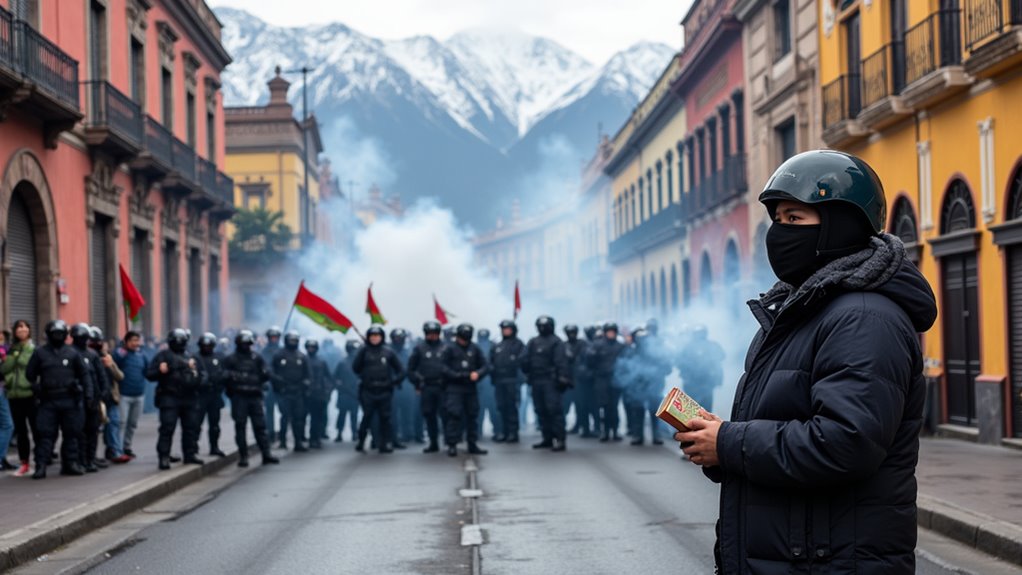
While traversing Bolivia’s stunning landscapes, you’ll need to remain vigilant about the country’s volatile political climate and growing civil unrest. Economic stagnation and political tensions surrounding former President Morales have triggered widespread protests, with over 80 demonstrations recorded in September 2024 alone.
To protect yourself during your visit:
The upcoming 2025 elections may further intensify tensions, so stay informed throughout your journey. Ongoing fuel shortages across the country have sparked social unrest as the government struggles to maintain its fixed exchange rate amid dwindling foreign reserves.
Solo travelers exploring Bolivia’s diverse landscapes face unique safety challenges that require thorough preparation and heightened awareness.
Always carry emergency contacts and share your itinerary with someone you trust. Consider joining groups for excursions to remote areas like the salt flats or Amazon basin.
When orienting yourself in cities, use reputable transportation services—never hail random taxis, especially at night. Use official taxis with displayed licenses visible or recommended apps for safer transportation options.
Keep your valuables secure using a cross-body bag or money belt, and maintain digital copies of important documents. Learn basic Spanish phrases to communicate effectively with locals.
Stay vigilant in crowded markets and bus terminals where pickpocketing is common.
For accommodation, choose well-reviewed hostels or guesthouses where you’ll meet fellow travelers. Trust your instincts—if a situation feels unsafe, remove yourself immediately.
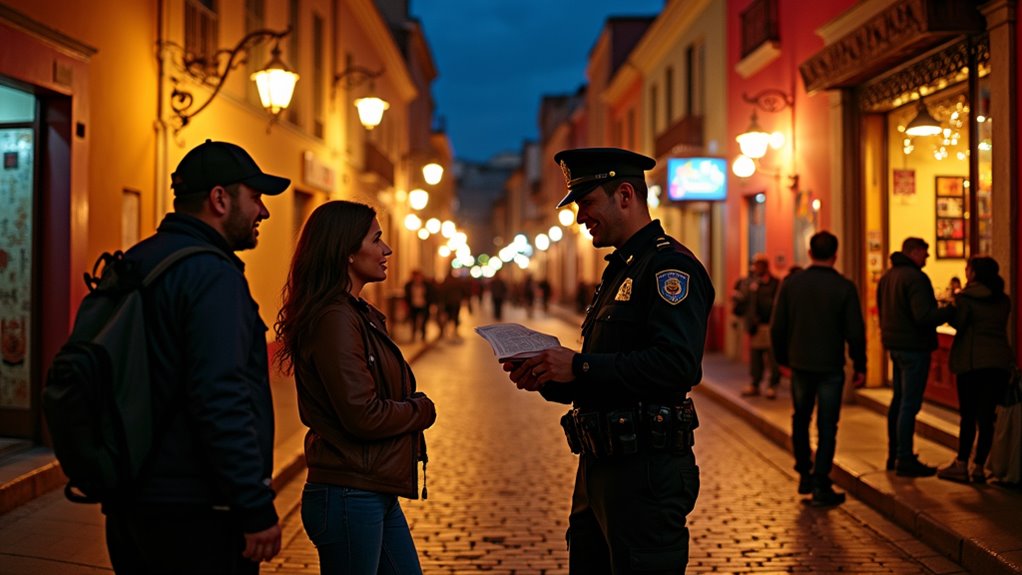
Enjoying Bolivia’s vibrant nightlife requires careful planning and heightened vigilance, as urban areas present significant safety challenges after dark. Crime rates escalate in cities like La Paz and Santa Cruz after sunset, with travelers being particularly vulnerable.
For safer nightlife experiences:
Be aware that some establishments known as cocaine bars in La Paz specifically target foreign visitors, where involvement could result in severe legal consequences.
Never display valuables or carry excessive cash when enjoying Bolivia’s nightlife scene.
Since Bolivia’s water supply doesn’t meet international safety standards, you’ll need to exercise extreme caution with all water consumption and activities. Never drink tap water—stick to bottled or boiled water for drinking, brushing teeth, and washing food.
Bolivia’s water is unsafe—only use bottled or boiled water for all consumption and hygiene needs.
Avoid ice cubes, uncooked vegetables washed in tap water, and street food prepared with unsafe water. When swimming, only use designated areas and never swallow water in pools, lakes, or rivers. Always wear a life jacket during boating activities.
Keep away from wildlife and rodents near water sources to prevent disease transmission. If hiking or engaging in outdoor activities, bring sufficient bottled water and avoid drinking from natural sources.
Remember to thoroughly wash hands with soap and safe water before eating to prevent infections. Before taking boat tours on Lake Titicaca or other waterways, always verify the vessel has proper safety equipment and isn’t exceeding passenger capacity limits.
Bolivia isn’t completely risk-free, but with proper precautions, you’ll enjoy a rewarding visit. Most travelers experience no issues during their stay, with over 80% reporting positive safety experiences in recent surveys. Stay aware of your surroundings, respect local customs, and follow our safety guidelines. Whether you’re exploring La Paz’s markets or driving the infamous Death Road, smart preparation makes all the difference in experiencing Bolivia’s incredible culture safely.